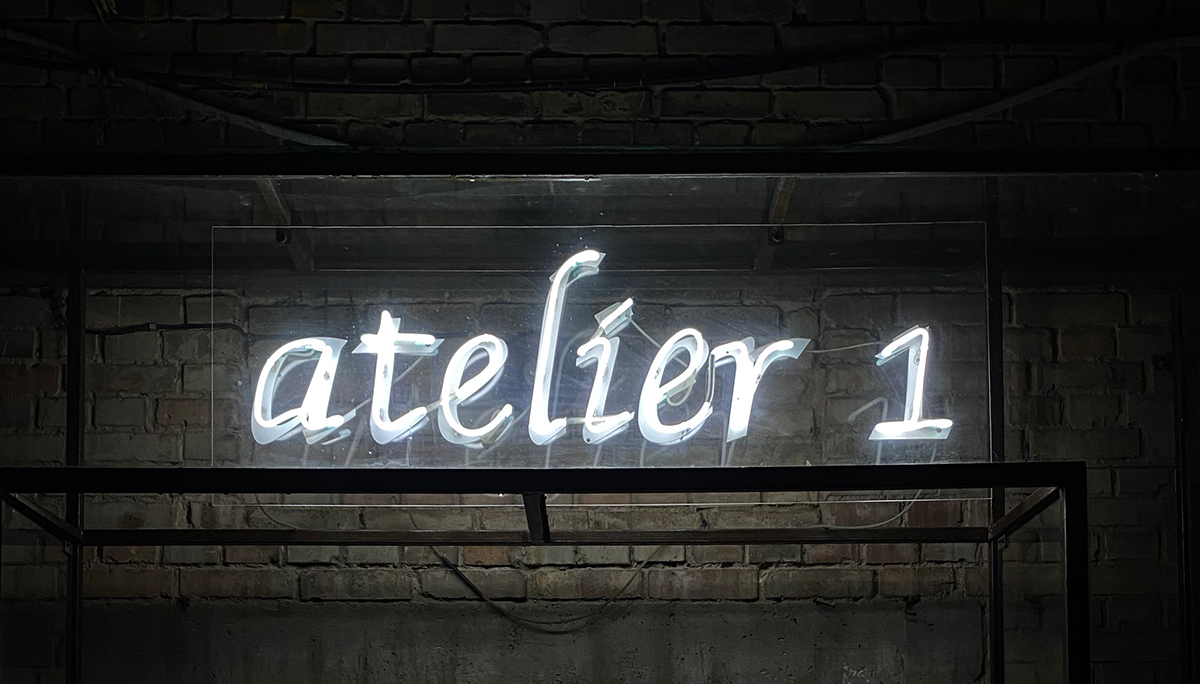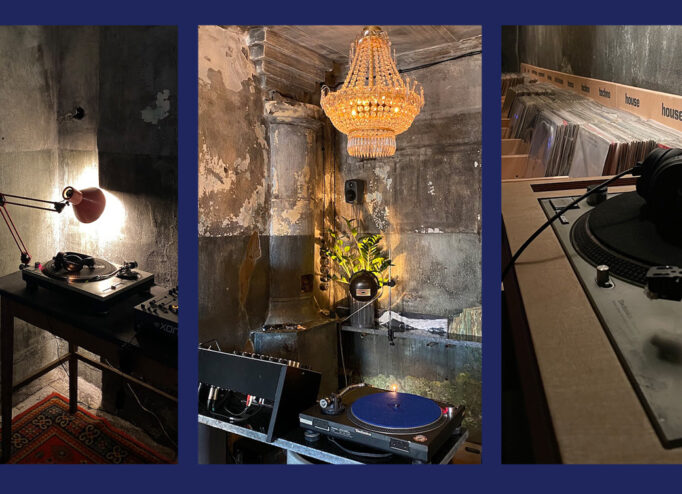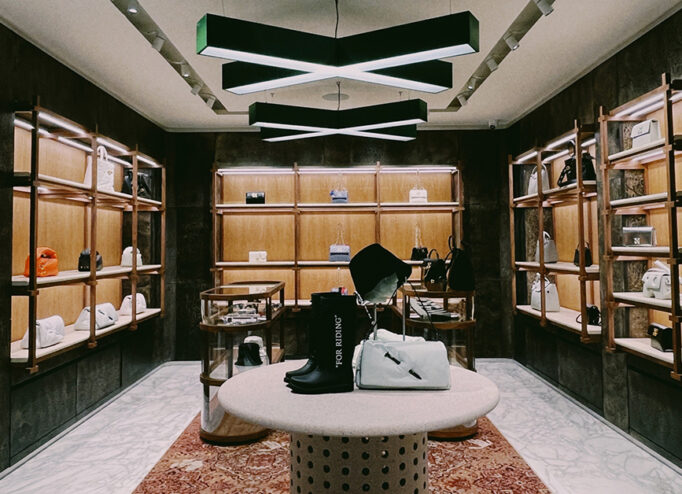Atelier1 is located in the center of Kyiv in a Cold War bunker, where it has been selling global brands, from Comme des Garçons to Gosha Rubchinskiy and Doublet, for 15 years. But Atelier1 says that they opened the concept store primarily to develop the local market – Ukrainian designers got into Dover Street Market and made shows in London for the first time thanks to it.
At the same time not much is known about the concept store: it is not easy to find Atelier1, they don’t write about it in the local media, and they don’t disclose their guests — they value their privacy so much. DTF Magazine caught up with Atelier1’s founder Helen Khilkova to find out why Kyiv needed a niche concept store, how the world’s brands came to Ukraine, what happened to Ukrainian designers at Dover Street Market and what places Rei Kawakubo visited during her visit to Kyiv.
Contents

Briefly about Atelier1

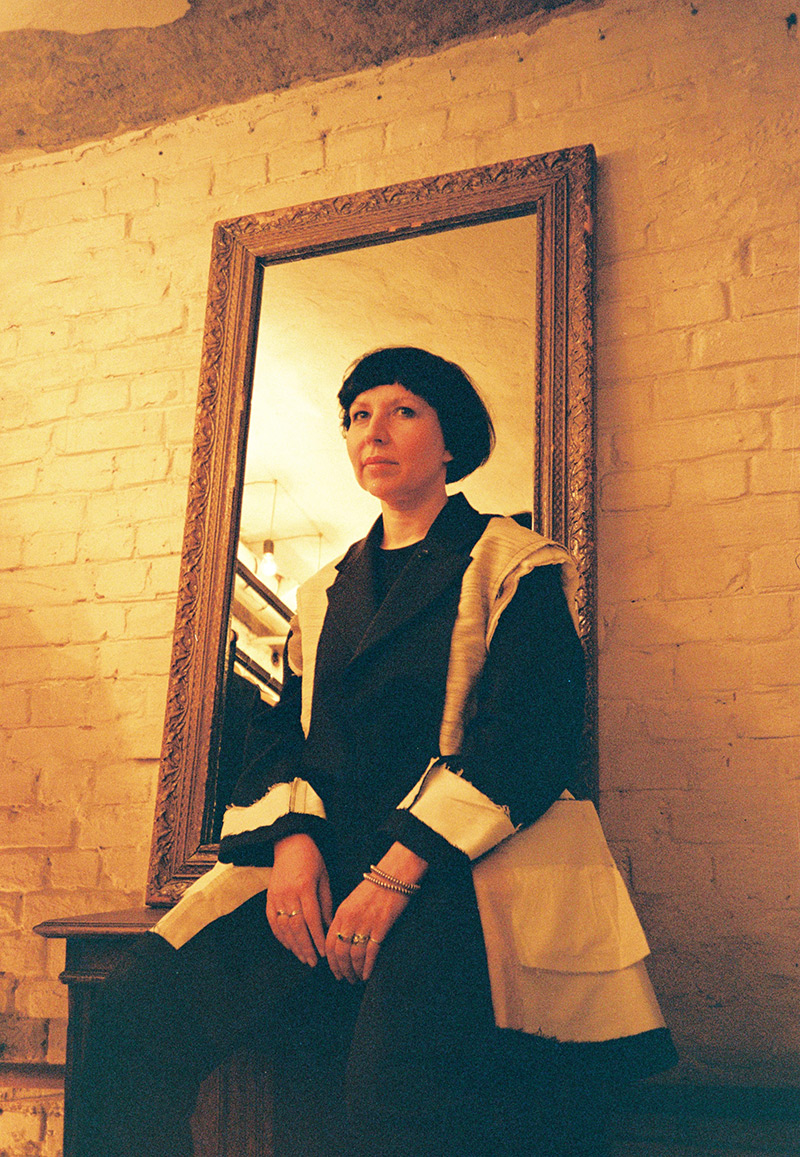
Atelier1 was opened by Helen Khilkova and David Foley in 2005. Helen was responsible for the business model, and David became the creative director of the concept store.
Atelier1’s first location was the Alta Center on Bandera Avenue, where the Epicenter is now located. The concept store worked there for a short time: it helped to attract traffic to the first project of Ukrainian designers Fashion Lab, and then it moved to the Vozdvizhensky Hotel on Andreevskij Descent. Adrian Joffe, president of Comme des Garçons and husband of Rei Kawakubo, also came there for the first time.Adrian liked the store and he offered Atelier1 to open their space in Dover Street Market.
The final location was a bunker in the center of Kyiv, where Atelier1 moved to in 2008. Their clothes cannot be bought online, so you have to go directly to the concept store.Atelier1 has no shouting windows and massive signs like Comme des Garçons stores, — you can find it in the courtyard at 10, Taras Shevchenko Boulevard.
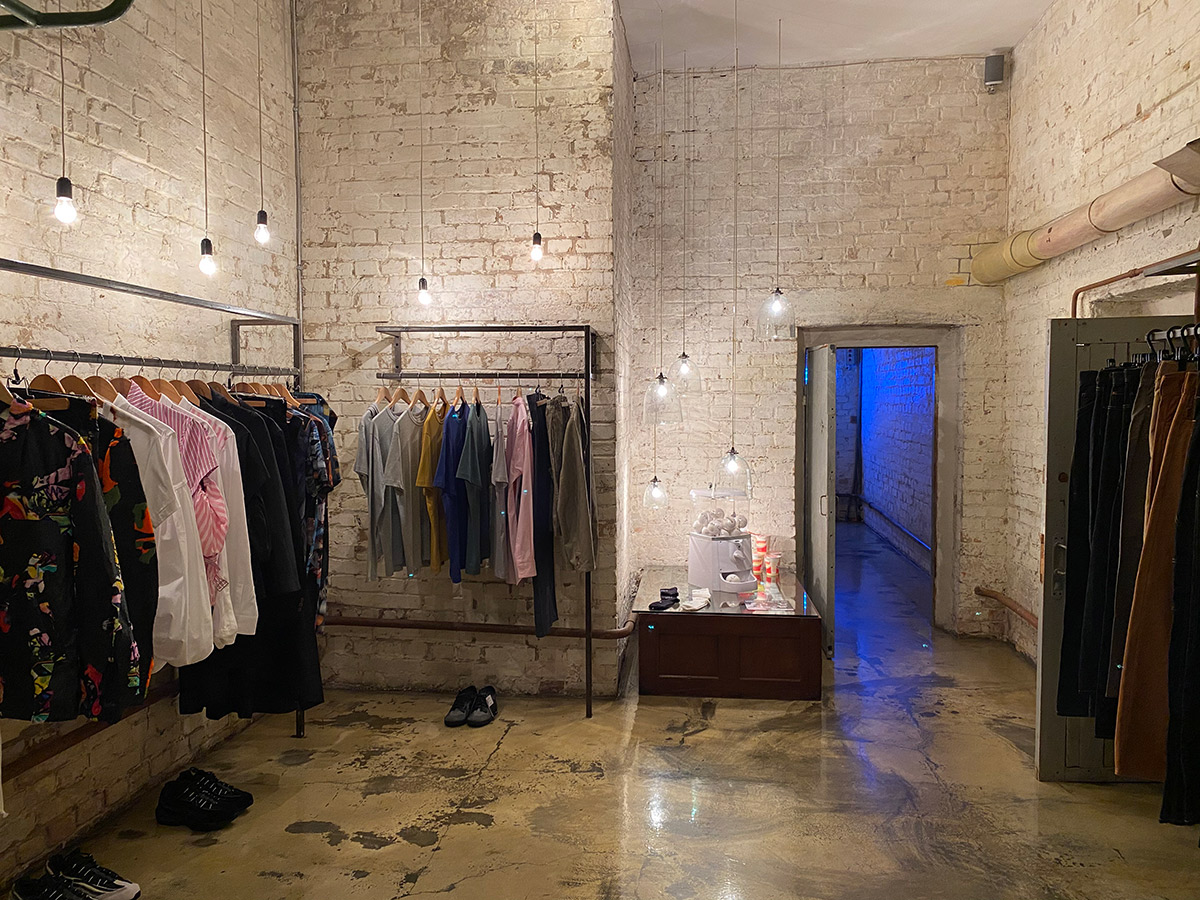
How it all began

— You are positioning yourself as the first concept store in Kyiv…
— That’s right. We became the first multi-brand store of Ukrainian designers and the first concept store in Kyiv in 2005. And this is not my fantasy — Vogue Italia, Vogue Hong Kong and British Vogue wrote about it. They wrote about us in books about merchandising and business models published in Germany and England.
— Tell us how it all started. Who needed such a store in 2005, when rich people liked tasteless clothes with catchy logos like Versace and Dolce & Gabbana?
— I loved Japanese and Belgian designers, but I had no fashion background before I opened Atelier1. I have been running DonStream since 1993 — we were the first in Ukraine to do education abroad.
We represented Oxford University Press, but at the same time I was friends with Central Saint Martins (CSM) and London College of Fashion (LCF), the top universities in the world of fashion and art. We often saw each other in London, and I was offered to open their representative office in Ukraine. But I understood that the Ukrainian market was not ready for education in creativity yet.
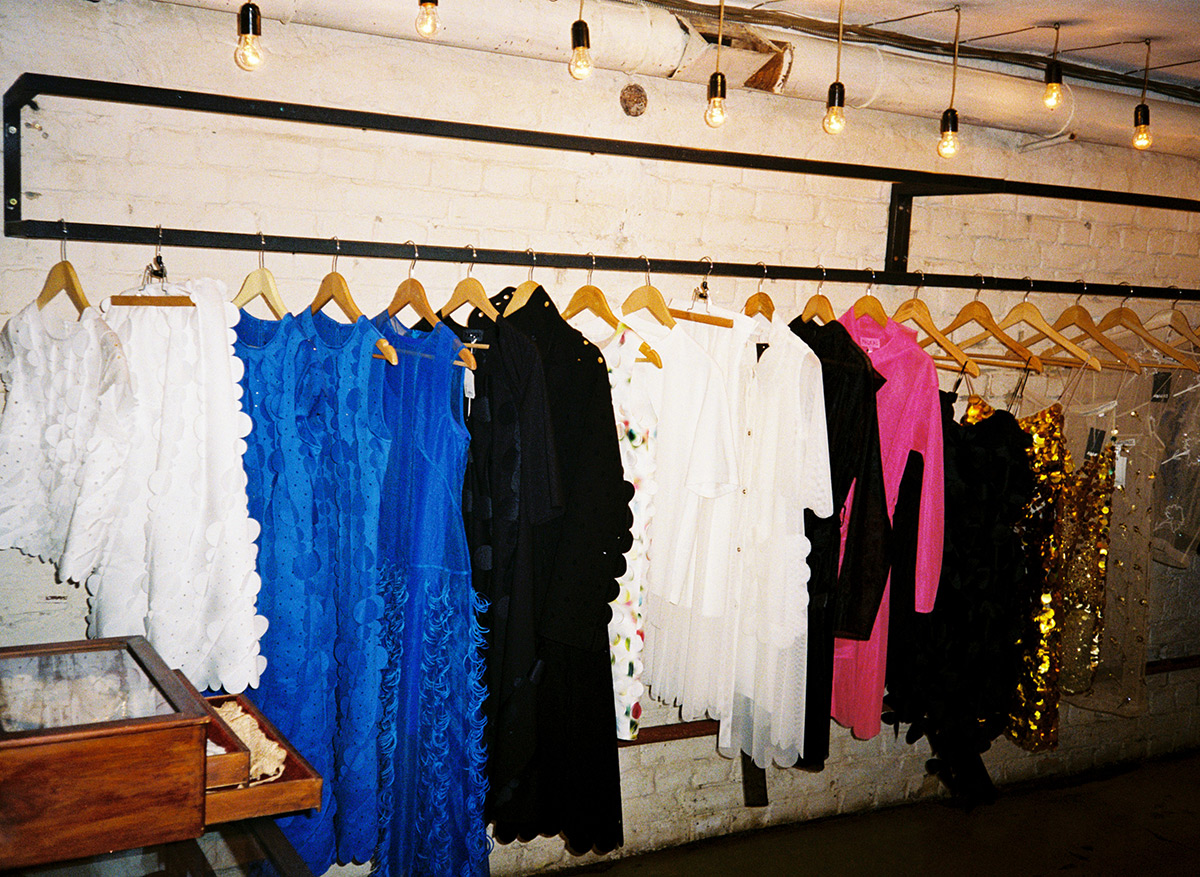
And then one day, I got a call from the British Embassy in Kyiv in 2003. The guys from the association of young Ukrainian designers asked them to hold a master class on preparing a portfolio with specialists from Central Saint Martins. We decided not to bring CSM, because the market was not ready, but I agreed to invite someone from Oxford Business School. I thought the teacher was coming. No one suspected that it would be David Foley, the president of the World Association of Colorists and a legendary man in the fashion world.
I realized that I was a little bit stuck when he arrived, Firstly, I saw that there are still students in Ukraine who want to know about portfolios and Central Saint Martins. And secondly, I realized that it’s hard to find an interpreter who understands punk, new-wave, knows about Vivienne Westwood and Joy Division. We hired a professional, but I still had to get up in the middle of the presentation and translate on my own. That’s how I met David.
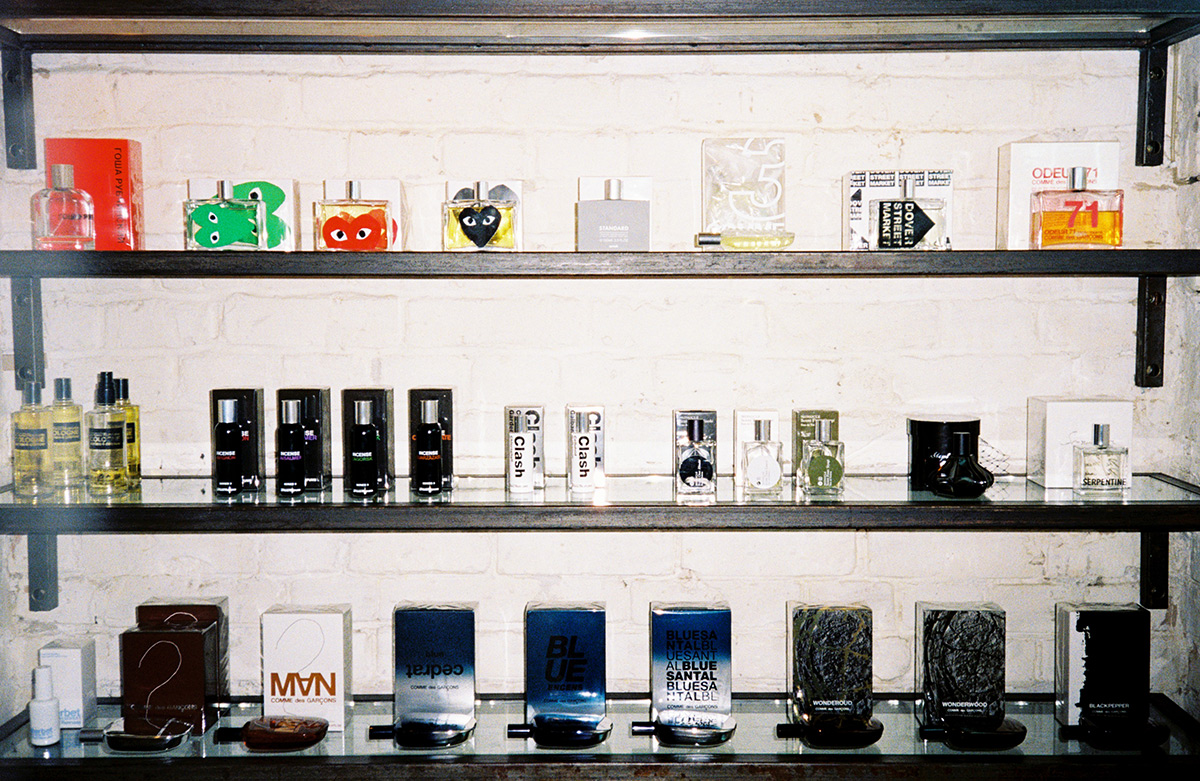
— Were you already thinking of opening Atelier1 at that time?
— No, David stayed for a while and left. Then we were asked to bring him again, before the Ukrainian Fashion Week. Hе asked us to assist him when he arrived. I remember that he said to me: «Helen, you have such a great country, what more can I do for you?» And I knew even then that Ukraine was missing a store of local designers. The students who went to study in the UK were talented, but not everyone could meet the right person to buy their first collection, as was the case with John Galliano and Alexander McQueen. And not everyone has a dad like Paul McCartney. But we haven’t decided anything yet.
The turning point came when I was asked again by those girls who had asked for a portfolio workshop. They wanted to open a multi-brand designer boutique. David found out about it and said: «Well, Helen, isn’t that what you wanted?» and I said yes.
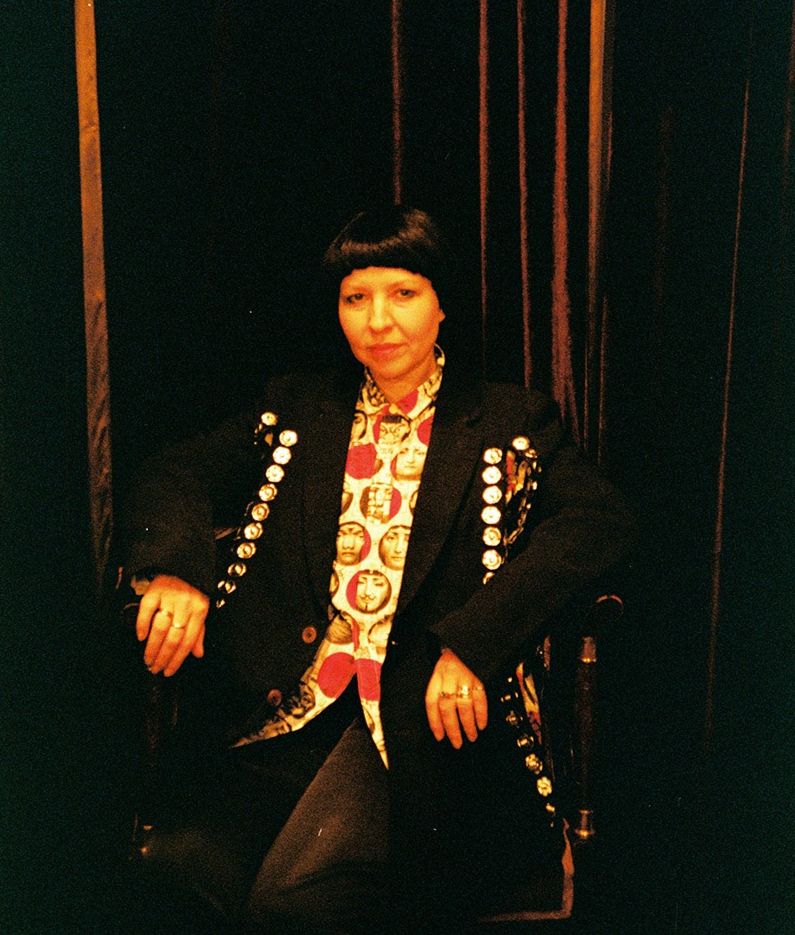
— How long did it take to implement the idea? Has it ever occurred to you that in the process of preparation you wanted to stop?
— David volunteered to help me right away, and we worked for free, although we didn’t create the project for ourselves at first. I was responsible for the business structure, and he was responsible for bringing in brands that were not available in Ukraine yet. At first I did not understand why a store of Ukrainian designers needed foreign brands, but David explained that high-quality foreign brands had to be around so that people would notice and understand local brands and that people would understand that it was not a shame to wear them.
Many brands have agreed to stop by after hearing just one name, Foley’s name. David has a crazy reputation. He has helped open and consulted 45 stores — not only in the UK, but all over the world. The collections he designed were in the windows of Selfridges, Liberty and Harvey Nichols. He said that he no longer worked with those girls and changed his mind about investing in the project when we had already signed contracts with the brands and showed the plan to our investor. I remember when David and I were at the airport after that news. I saw him sitting curled up, and I realized that I had set the man up.How could he go back into fashion after that and talk to Comme des Garçons and other brands that gave orders just because of his name? I had money with which I wanted to buy a penthouse at the time. But I decided to invest in the store after talking to David. We didn’t want to give up on our idea.
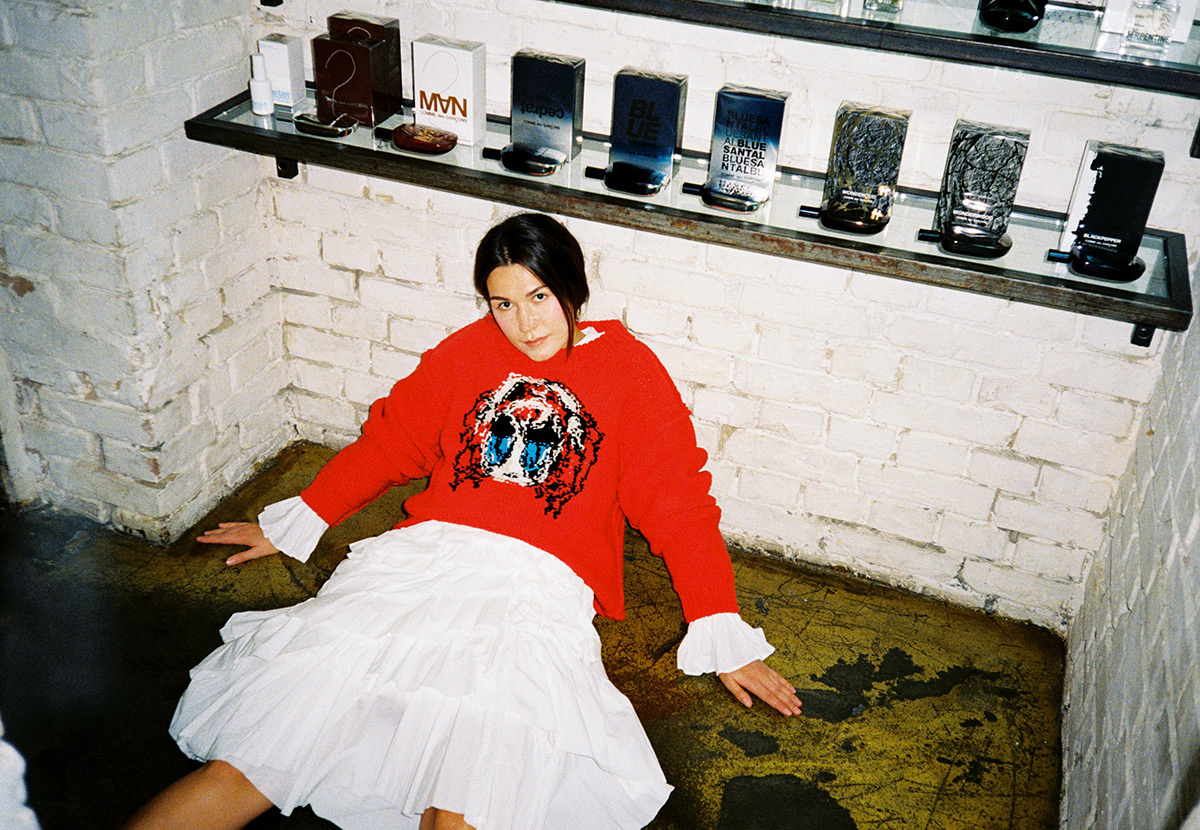
About the location in a bunker in the center of Kyiv

— A bunker is an atypical place for a store with luxury brands. Why did you decide to open a concept store underground?
— We could have found a location in Passage, but that would have been too banal. All Comme des Garçons stores are in places that seem obvious, but you have to find them. For example, the flagship store in Paris didn’t even have a sign before. We were looking for a similar atypical place.
— You got it right with the bunker. How did David react to it?
— He didn’t speak to me for over a month and told me I was crazy. He had never been in a bunker before, he lived in a castle that was built as a prototype of Buckingham Palace. David was afraid the moisture would be indoor and he was also afraid that visitors would be claustrophobic. But he immediately started creating when he first got here.
The intelligentsia lived in the house above us during the time of the Soviet Union. That’s why our bunker is a room of the highest level of security. A tunnel-corridor with air reserves was built around its perimeter. If World War III broke out, the tenants could stay here for a long time. We moved in in 2008. The world was in crisis, and we wanted our clients to feel safe as well.
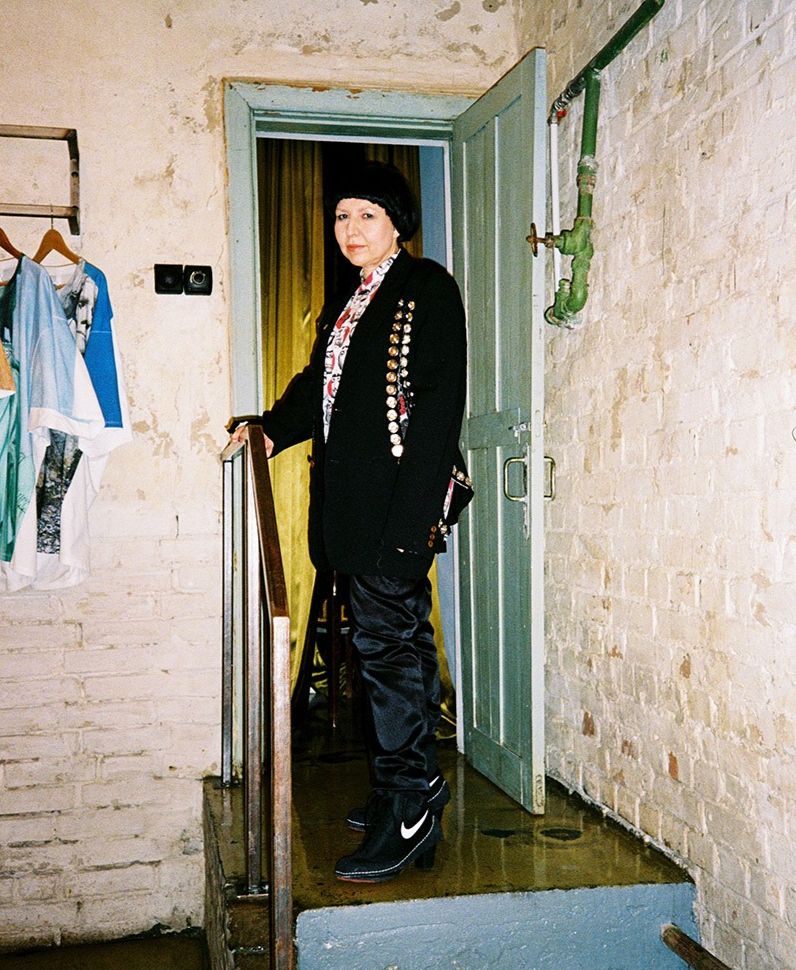
— I read that Comme des Garçons stores change the interior a little bit, but they still bring something of their own. I see you have the same approach.
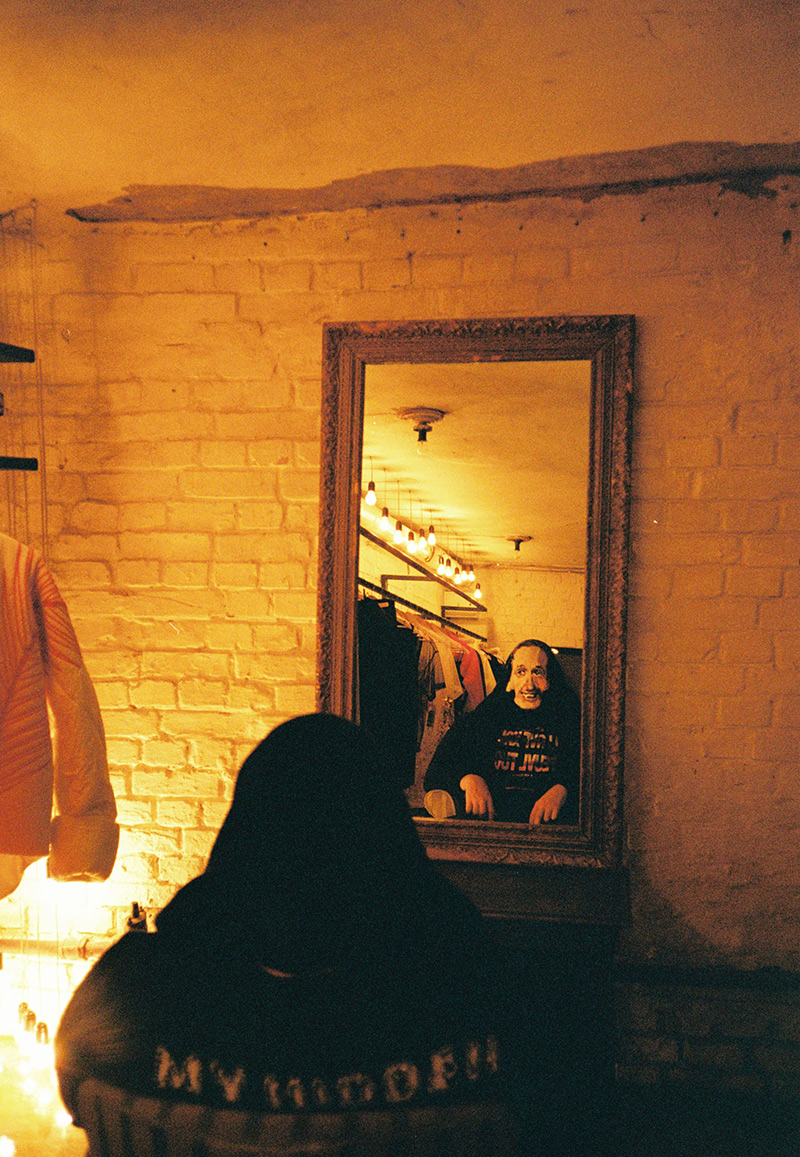
— We hardly even make any holes in the walls. If we drill, we try to reuse them. Adrian Joffe taught that space should be approached as a theater: nothing should be fixed, everything should be “smooth”.
Atelier1’s space has changed more than once since then. We did a matte finish on the concrete floor when there was a lot of brightness in the world. We’ve added glitter when there was a lot of depression. It was all designed to complement our collections. Ukrainian magazines don’t mention us, but foreign media about design and interior come even from Hong Kong, Paris and New York.
About the first brands at Atelier1

— You said that when you launched Atelier1, you signed contracts with brands that did not exist in Ukraine. What brands were they?
— The first brand was the Comme des Garçons SHIRT line. We decided not to start with the main line, but took a simple brand of shirts. Now everyone knows that PLAY hearts are cool, but shirts were a hit back then. The second was Katrin Mimi with her creams, fragrances, candles. Ukrainians realized that candles are cool only in the last five years. And imagine them for a hundred euros in 2005. We also had candles by Christian Tortu, who makes bouquets for fashion houses and royal families. We had jewelry by Jean-Daniel Brami. We had Cote Bastide gels and oils, which Madonna sent a plane for.We had Ben Simon French handbags. We had Cezare jewelry brand. And, of course, we had Comme des Garçons perfume.
Customers saw women’s clothes only by Ukrainian designers when they walked into Atelier1. Comme des Garçons SHIRT were for boyfriends so they would not be bored. And all this was shaded by accessories and costume jewelry from Western brands, which were so exquisite. They weren’t the most expensive, but they were the right ones. The store was conceived as an elaborate capsule.
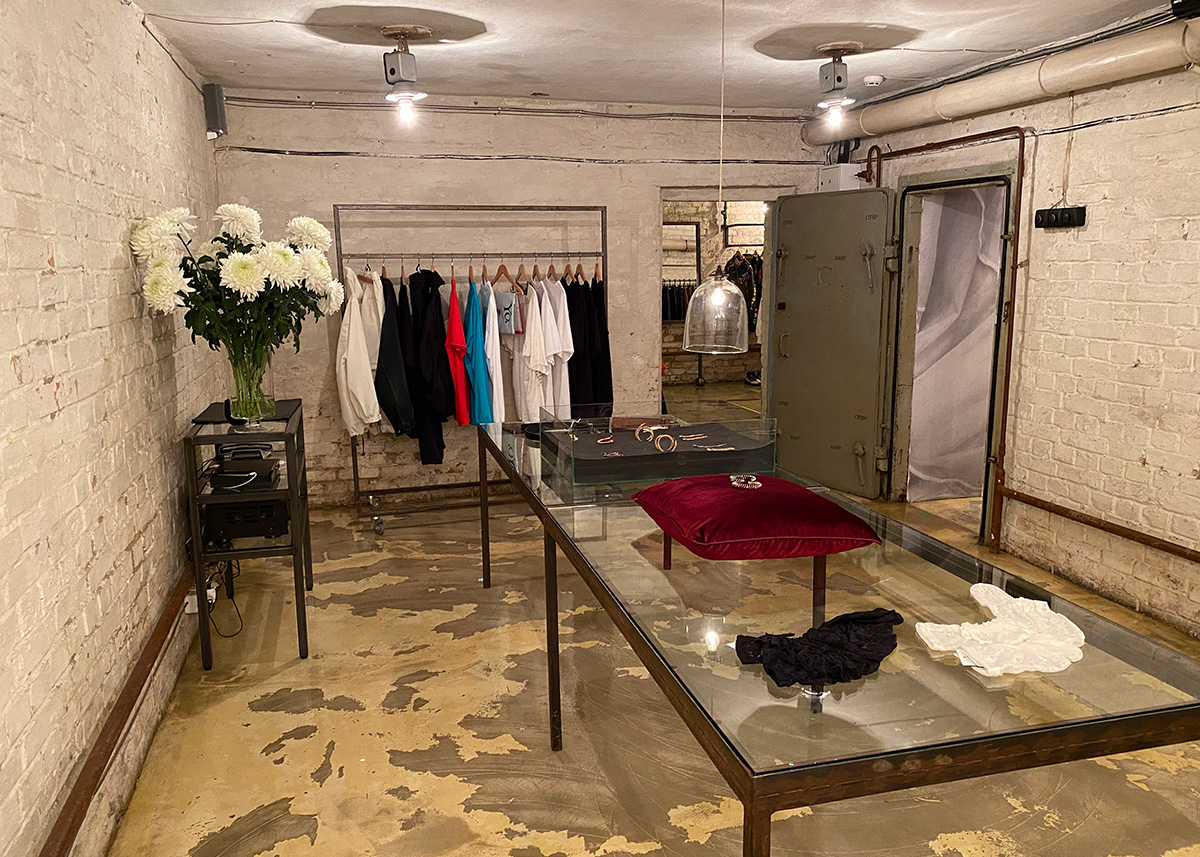
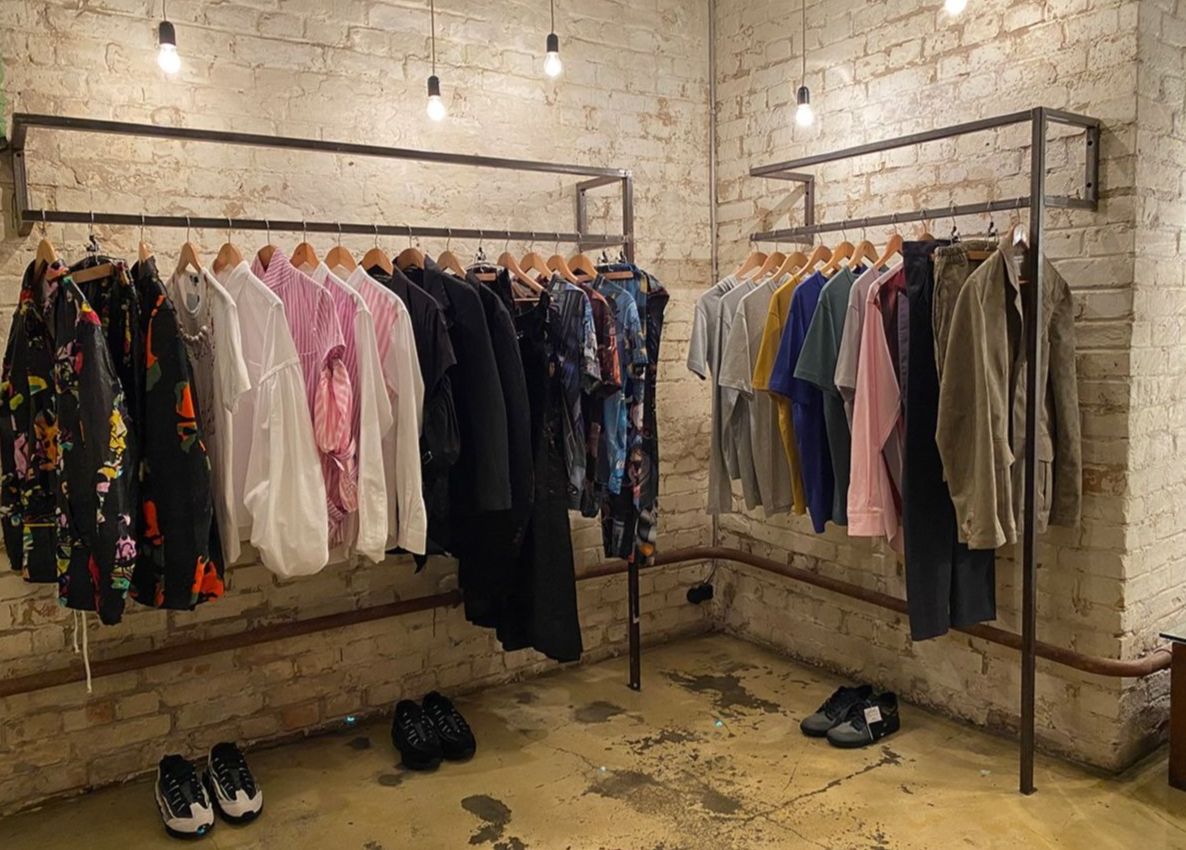
— And when did you start importing the main Comme des Garçons line?
— We had just opened, and Adrian kept asking when we were going to start buying the main line. But David didn’t want to «kill his kids». Our designers were just learning how to create commercial collections, how to sew clothes in the right size range. They had cool clothes, but not cool enough to compare them to the main Comme des Garçons line. The gap in vision and quality would be noticeable if we placed them side by side.
We got the delivery of the main CdG line at the end of 2006. I had to buy that collection myself, and it was my first order ever.
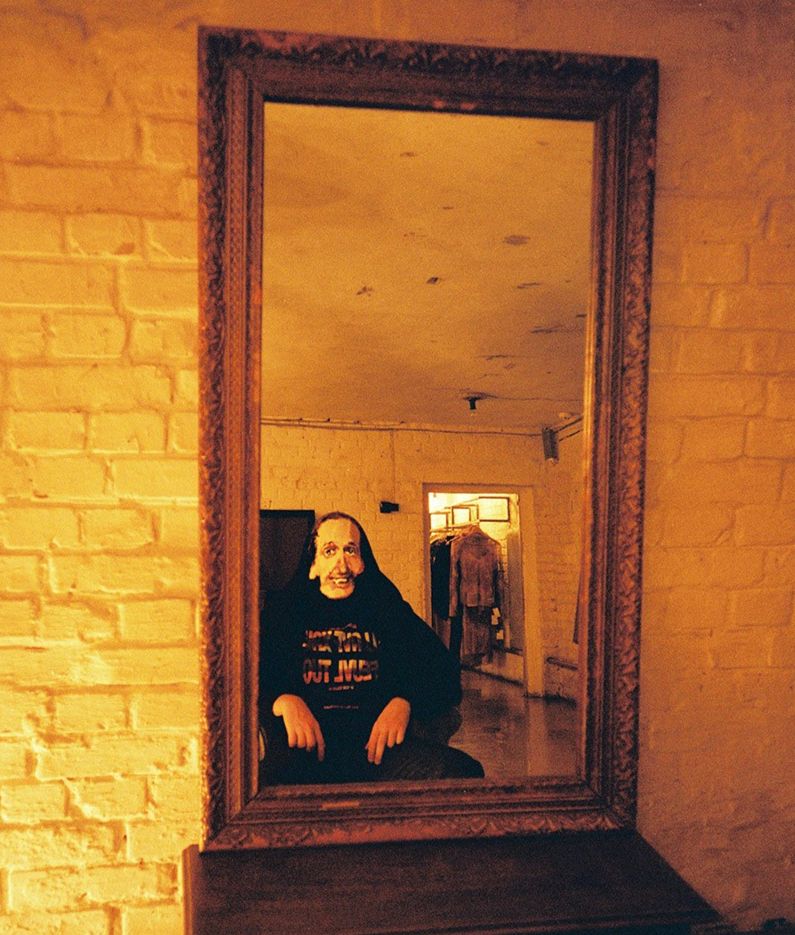
— Why were you chosen to buy the first collection?
— I had no fashion background, so David taught me. At first I cried with him for 30 minutes , then it lasted 20 min, then it lasted 15 min. Then I stopped crying and was silent for six months. His training is like the Shaolin Monastery: you come out as a grand master.
I was in England the day before the order and wasn’t going to fly anywhere, but the Comme des Garçons showroom called and said that we couldn’t wait any longer. They were approached by three other stores from Kyiv, who also wanted to buy the main line.
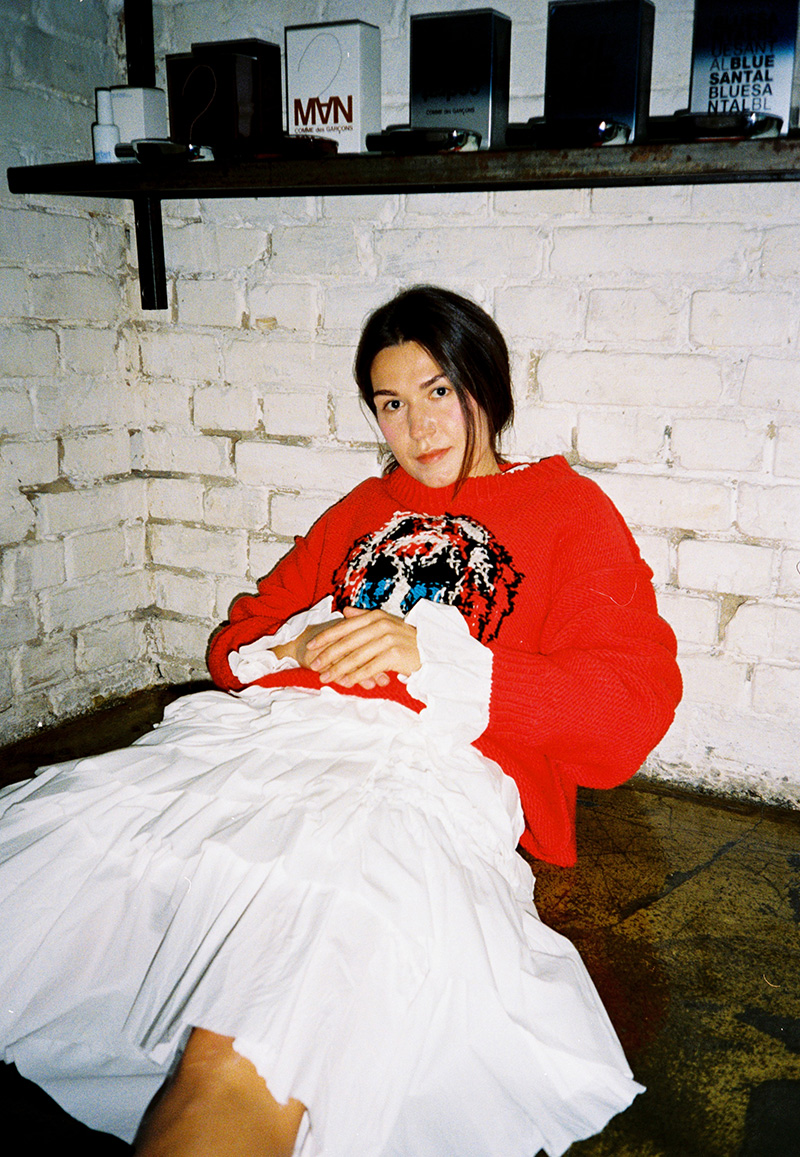
We bought tickets, and I went to Paris on my own because David was busy. I picked out clothes and reassured myself that even though I’m not from the fashion world, I’ve been wearing Comme des Garçons perfume since 1994. Rei released the Lumps and Bumps collection when I was pregnant in 1997. The clothes in it were intricately shaped and matched my pregnancy situation. I realized that Comme des Garçons had been my aesthetic before. What was I risking other than money? David was always scolding me anyway, but we were partners and he trusted me.
I got a call from the CdG head office two days after the purchase, and they told me that three other stores had ordered an almost identical selection. I already thought that I didn’t meet David’s expectations, and then they told me: «Comme des Garçons Paris, Comme des Garçons Tokyo and DSM London ordered the same selection. You see the world through our eyes, welcome to the family».
About Rei Kawakubo’s visit to Ukraine

— How did you do it the first time? Intuition?
— I ordered with my heart. The biggest praise for me was when Rei Kawakubo visited Atelier1 years later. I remember that she came in the middle of a sale, and we come up with a different theme for each sale. She saw a minimalist, cold store in the photos, and we decided to turn the space into a florist’s shop. You go inside and you see pots hanging, huge flowers… It is not Rei’s aesthetic at all.
— But it’s her style to change the space.
— Yes, she liked everything in the end. She liked the jugs from England from the nineteenth and twentieth centuries and the iron bowls. And a small selection of archives was in the next room. We were lucky because we put in exactly the strong clothes. Rei appreciated it when she saw it.
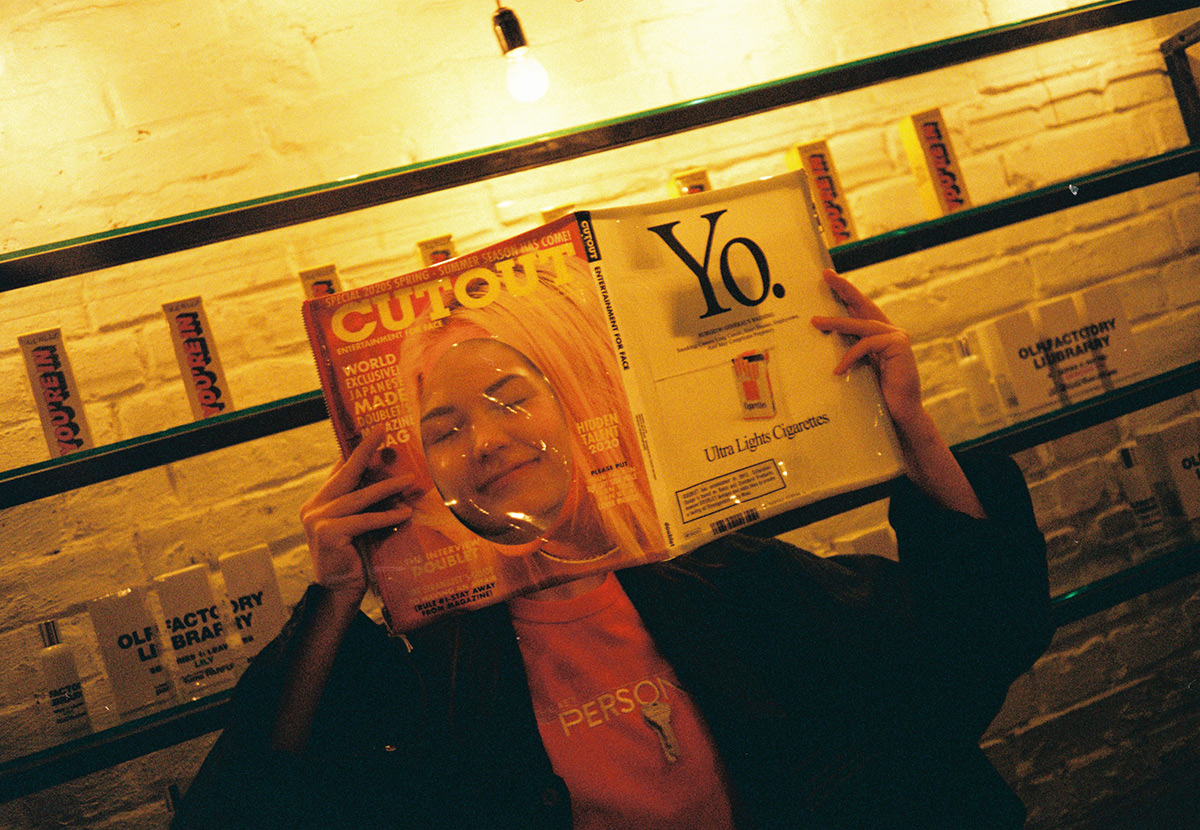
— Did she like Atelier1?
— Yeah. I was really worried, even though I’d seen her before when we went shopping. She was sitting there, and we saw Rei laughing for the first time.
And Adrian reprimanded me. He asked me what Atelier1 made in a day. I didn’t know, and that angered him. I said, «Adrian, my daughter had a birthday yesterday, and here you are, thanks for the gift». But he still wanted to know the numbers. I had to know the amount. It was a good day, thank God, but Adrian was outraged anyway. He said we were a long way from the DSM because I underestimated my potential. He knows the day’s receipts in all of Dover Street Market, he wakes up with the numbers every morning. But I get it: if I get scolded, it means it’s okay. He wouldn’t waste energy.
— Was Rei here only once?
— Rei had been here once, and Adrian had been here twice. I remember them wondering why the museums were closed on Monday. And I warned them to come on Sunday. I could have asked someone to open the PinchukArtCentre or the Mystetskyi Arsenal for them, but Rei didn’t want to draw attention.

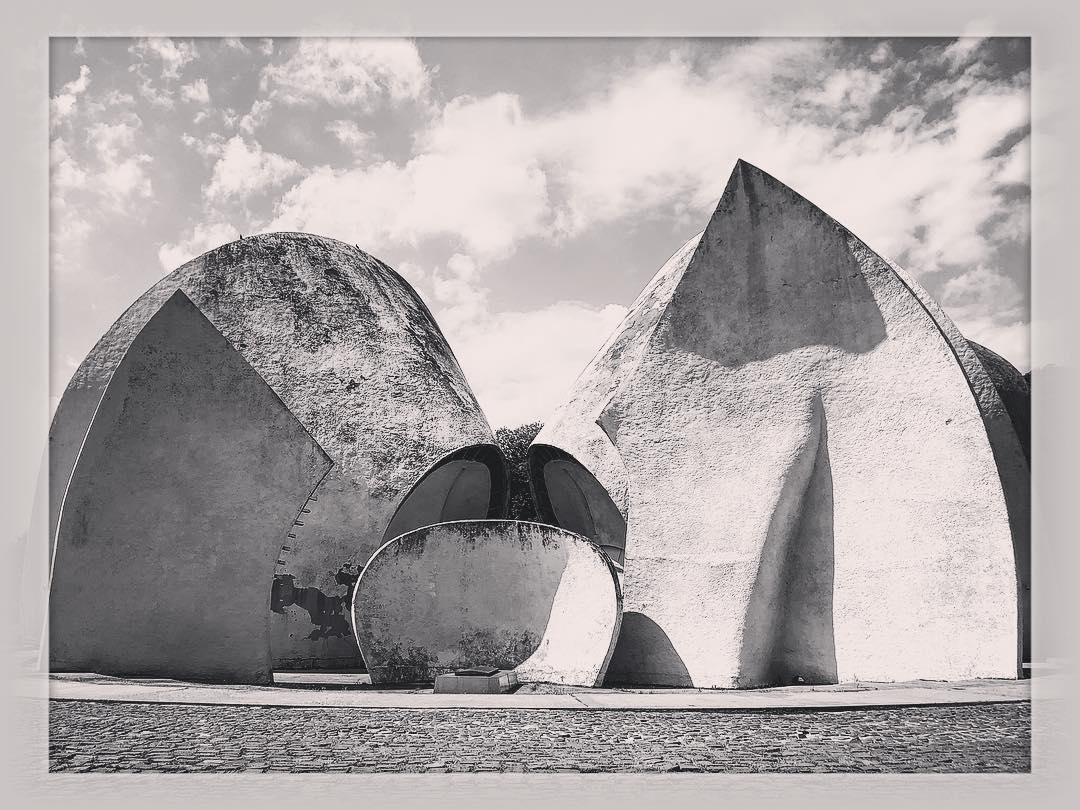


— What else have they seen in Kyiv besides Atelier1?
— Rei really likes brutalism in architecture and she came to Kyiv with her list of places. So I showed them the crematorium at Baikove cemetery. Where else can you go on a Monday? They also wanted to see the market on Lesnaya, but I told them it had become mainstream. But they liked it a lot anyway.
About foreign brands at Atelier1

— Do Adrian and Rei have any influence on your politics? Can they say, for example, that a certain brand shouldn’t be here?
— If you are in the Comme des Garçons family, they have complete trust in your aesthetics. They used to ask before, but now they have complete trust. We do not even have a strict contract with them, there is only a gentleman’s word. We ordered the Doublet at almost the same time as DSM, except that our delivery came a season later.
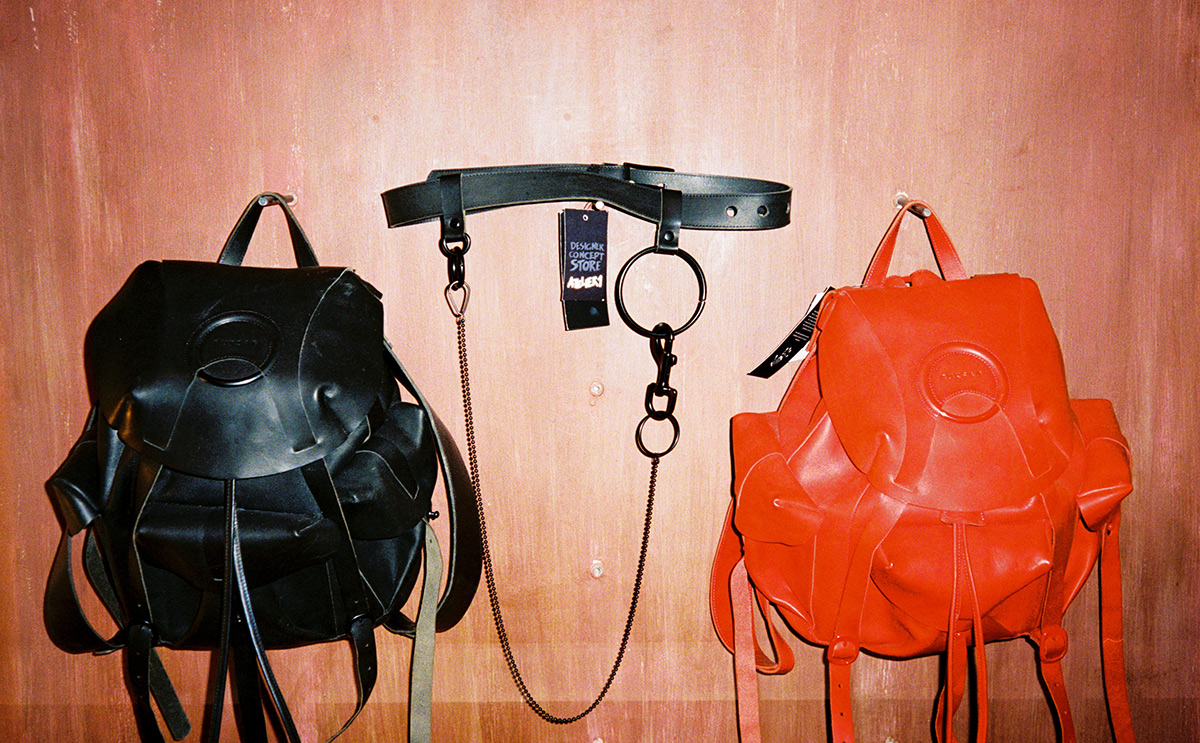
— Was it your initiative and not a tip from DSM?
— We choose who we buy. An interesting story happened with Doublet. I remember that we came to their showroom after they won the LVMH Prize. It was our buying time when I saw that buyers from more influential stores were coming. So we decided to leave early to give in to the big buyers. But Masayuki Ino saw this, grabbed my hand and said: «Let them wait. You were procuring us long before I won the LVMH Prize, and they only came running because I won».

— How do you find new names for Atelier1?
— We have long been following the concepts that are talked about a lot these days such as slow fashion, sustainability. We think not only about financial performance when we choose collections. We procured Julien David in advance. It’s a brand that won the ANDAM Prize. We bought Doublet three seasons before it won the LVMH Prize. We got Chika Kisada a year and a half before it became a hot name.
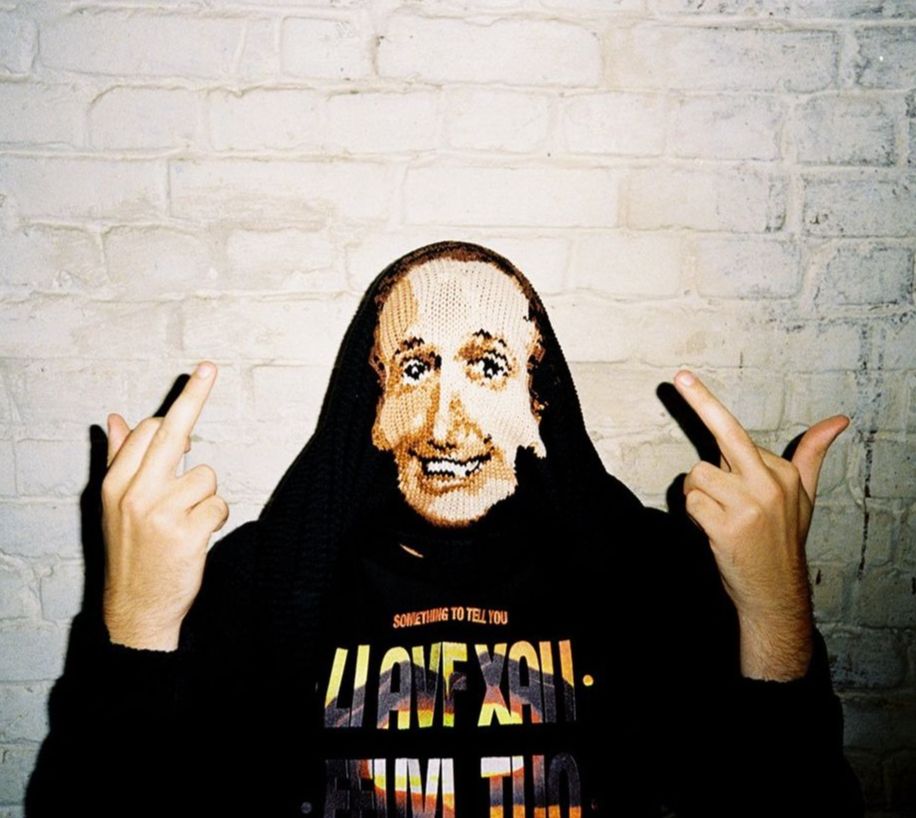
— Is it difficult to negotiate with new brands that are not linked to Comme des Garçons?
— We have such a well-known name that we have never been turned down. We are the ones who say no most of the time. And the loudest «no» was our refusal to Maison Margiela.
— So why did you turn them down?
— Their representative really liked the space when she walked into Atelier1. It matched the white aesthetic of Maison Margiela perfectly. But she said the luxury style wouldn’t sell “below the seventh step” so deep underground. But that wasn’t the main reason for the rejection, either. We wanted to bring Maison Margiela’s artisanal collection, but it turned out that couture is only sold in their own stores. We didn’t want to bring in a body without a heart. It’s not just pure commerce for us.

— Are there any brands you can’t reach?
— There aren’t any of those. For example, we are not interested in Vetements. I liked the way they conducted a psychological experiment with the whole world, but we play such games ourselves. Everyone was wearing everything colorful and embroidered when we opened. You were nobody without a catchy logo. And we were urging people to buy things by Ukrainian designers. How can you not wear Ukrainian clothes if you are a deputy? It was a win-win.
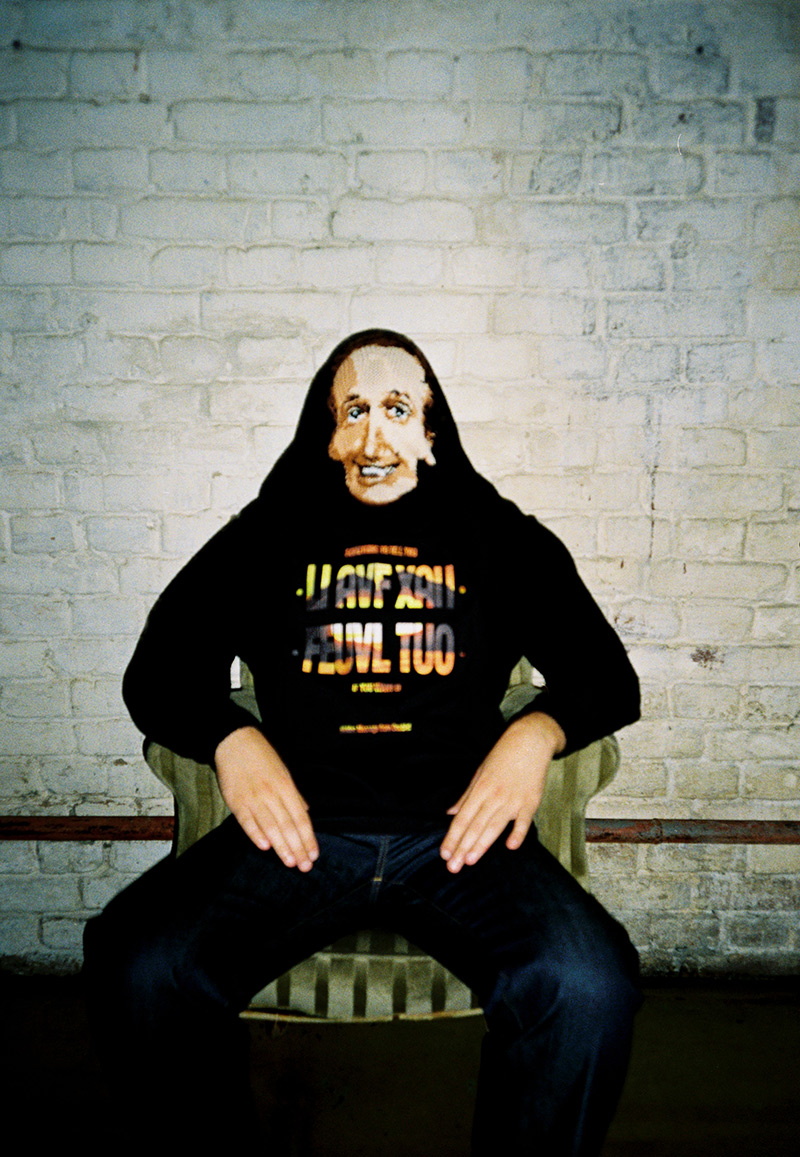
— By the way, how well is «complex» clothing sold compared to more clear lines and brands?
— All of our brands are selling well. If you look closely, you can see how everything is thought out in terms of age, price, aesthetics. For example, a girl who wears Yefimchuk’s clothes would not buy PASKAL things. I understand why Comme des Garçons sells: people run to us when the world is falling apart. I don’t want to use hackneyed concepts like «investment» and «image», but it’s true. These clothes are of excellent quality and really timeless.
— I didn’t think that avant-garde clothes were well bought. It gives faith to the Ukrainian buyer.
— It’s true. On the other hand, young people have also begun to realize that they can buy a Carhartt jacket, or they can buy a Carhartt x Comme des Garçons jacket, and that’s even cooler. We are grateful to Filip Pagowski who came up with the red hearts. I’m even glad when young people buy fakes. They can’t be judged, not everyone can buy original clothes.But maybe they’ll understand the difference and start raising money for the right clothes.

About Ukrainian brands at Atelier1 and Dover Street Market

— What about Ukrainian designers? Whose brands were the first in Atelier1?
— Atelier1 had five Ukrainian designers at first: Liliya Pustovit, the duo of Alyona Vorozhbit and Tatyana Zemskova, Andre Tan and Vladimir Podolyan. They were joined by Anna Pinko almost immediately. She has been working with us since Atelier1 opened. Anna not only deals with the business of the store, she is also a fashion designer.
We did a reboot and launched Atelier1 Collectif when we moved into the bunker. Atelier1 Collectif is a collective of Ukrainian designers who created collections under the Atelier1 brand. It included Liliya Litkovskaya, Artem Klimchuk, Anna October, Masha Reva, Luvi brand and jewelry designer Polina Medvedeva.
We allowed everyone to create their own space at Atelier1.We wanted the designers to be able to express themselves not only through their clothes, we wanted them to communicate their aesthetics. I remember that Artem got a semblance of a house, he deconstructed old furniture. Luvi created a torture room with hanging chains and a guillotine. Anna October turned to the aesthetics of burnt wood, she had a very «raw», but romantic space.
Then Collectif began to evolve. The artist Zina Likhacheva came to us and collaborated with the British designer Jean-Pierre Braganza, a CSM graduate. He designed the collection and Zina designed the prints. It showed that a new wave of Ukrainians can work with Western designers.
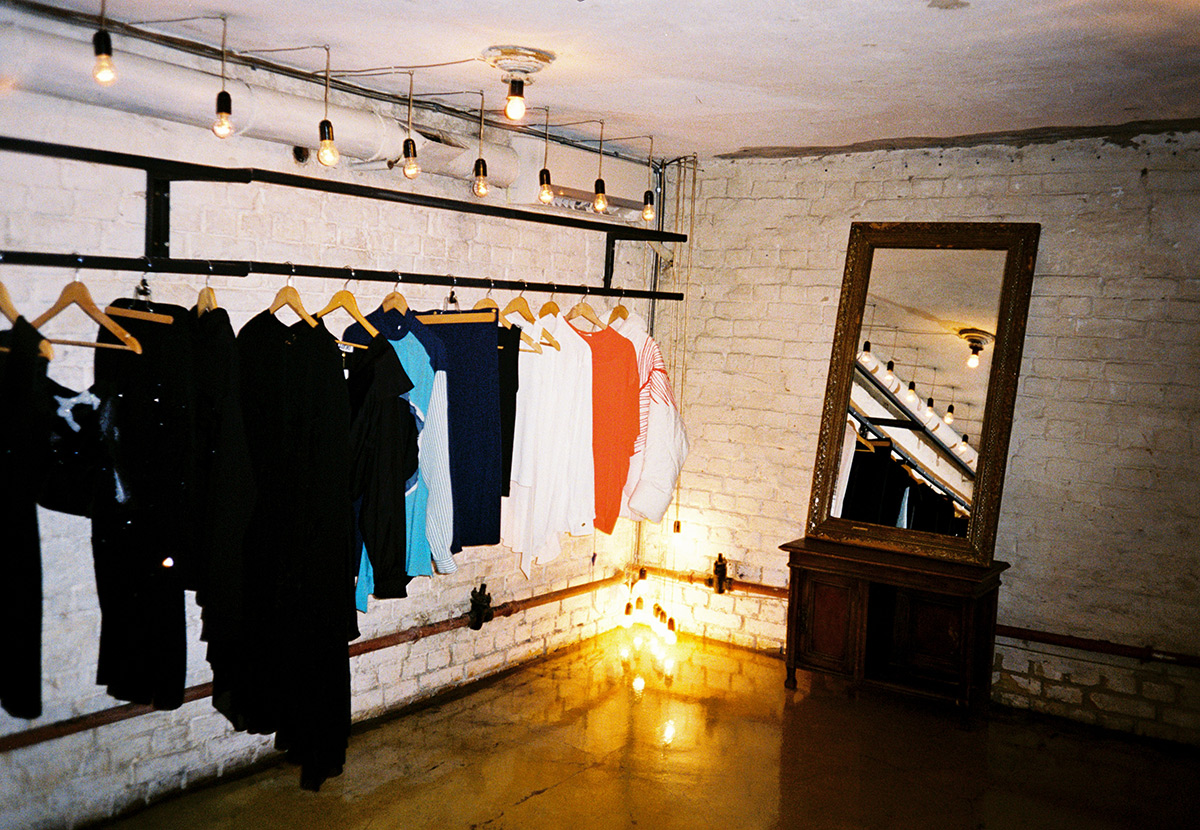
— Tell us about your shows in London and sales at Dover Street Market.
— Adrian offered us to open Atelier1 at DSM because he wanted us to do it with our own collection. So we invited Lilia Poustovit and Vladimir Podolyan to create a collection under David Foley’s direction.We bought fabrics, the designers came up with styles and clothes and they approved it with David and finalized it. He gave them advice, but gave them complete freedom. The third designer at DSM was Anna Pinko — she had to listen to edits the least.
All of these collections were created under the Atelier1 brand such as Anna Pinko for Atelier1, Poustovit for Atelier1. They were sold in London, Tokyo DSM and other stores around the world, including 10 Corso Como in Seoul and L’Eclaireur in Paris.
The shows were also under the name Atelier1. Our first Fashion Week show was in 2008, it was a show at the Brown’s Hotel. The second one was outside Saint James Palace where Amber Le Bon, daughter of Duran Duran lead singer Simon Le Bon, was our model. We only had two shows, but we still made a lot of noise.
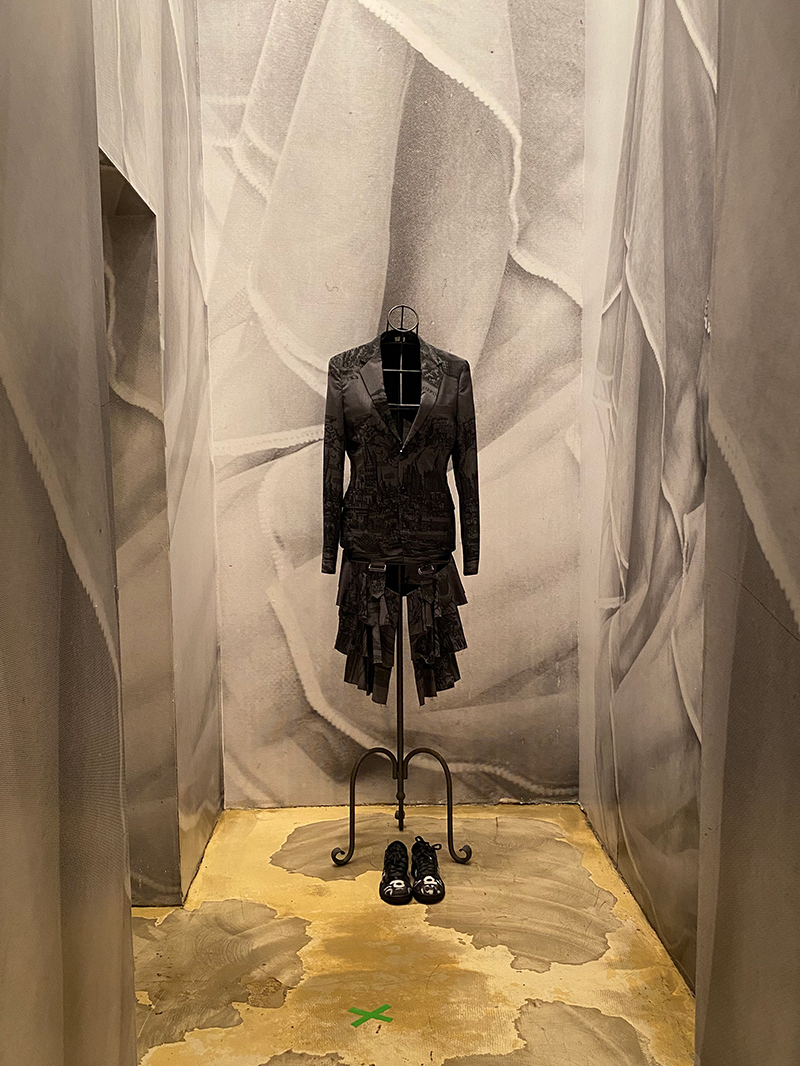
— How did the story with Collectif end? Adrian said in one of his interviews that Ukrainian designers did not sell well at DSM.
— Pustovit and Podolyan were sold in the DSM, not Collectiff.Their first collections were a hit, the second ones were a hit too, but the third ones had problems. It happened that the clothes came in size XS, but in fact it was L. Our clients were high-level people, for example, such as Gisele Bündchen, Princess Rania. They always bought one size, and it became a shame when the problems started.
The sales were okay. But then we had to decide if we were going to move forward or not. So we paused. We sat down with Adrian and David and decided that we would pause Atelier1 at DSM.We went out at the top and we could still come back with a project that we wouldn’t be ashamed of. This will happen when I see that local designers can do more than just two or three original collections and when I see that they are ready to evolve and remember our cooperation.

— Is it still possible to make such a comeback?
— We tried to go back before, about two or three years ago. We used to order a lot of shirts from the SHIRT line, but we had too many of them piled up because of size mismatches. It is the Japanese eternal problem at fact: you buy X, and X comes for my cat.So we decided to convert those shirts into custom Atelier1 clothes. We talked to Adrian, and he agreed.
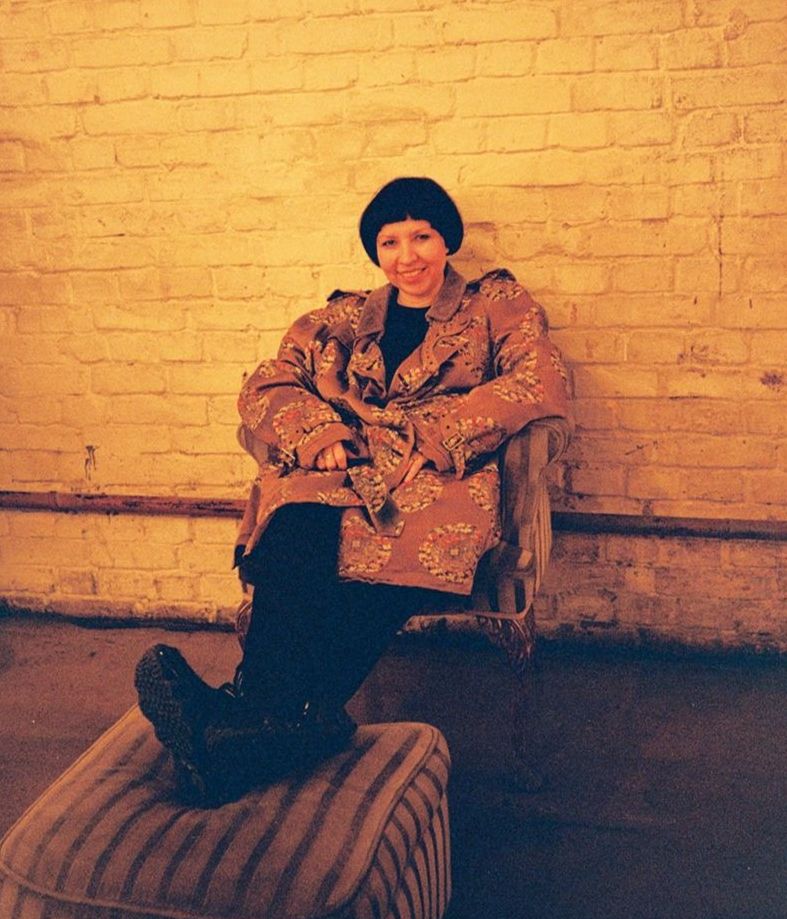
We recruited Masha Shubina and Ilya Chichkan for this project: they often traveled to India and they knew the sewing masters. Masha created the drawings, she and Anya Pinko developed the design, and she re-stitched the shirts into dresses.Then Masha and Ilya flew to India and asked the masters to embroider the designs. The collaboration was a three-way work that consisted of Atelier1 shirts, Masha’s drawings and the work of Indian artisans. I met Adrian when it was ready and we went to the Paris showroom and did the presentation. We were going to return in the DSM with this project.
It is forbidden to announce the project before DSM according to their rules of the game. We were already preparing for the announcement and discussing the launch when Ukrainian Vogue came out with pictures of these shirts on it-girls from Kyiv. So DSM abandoned this project.
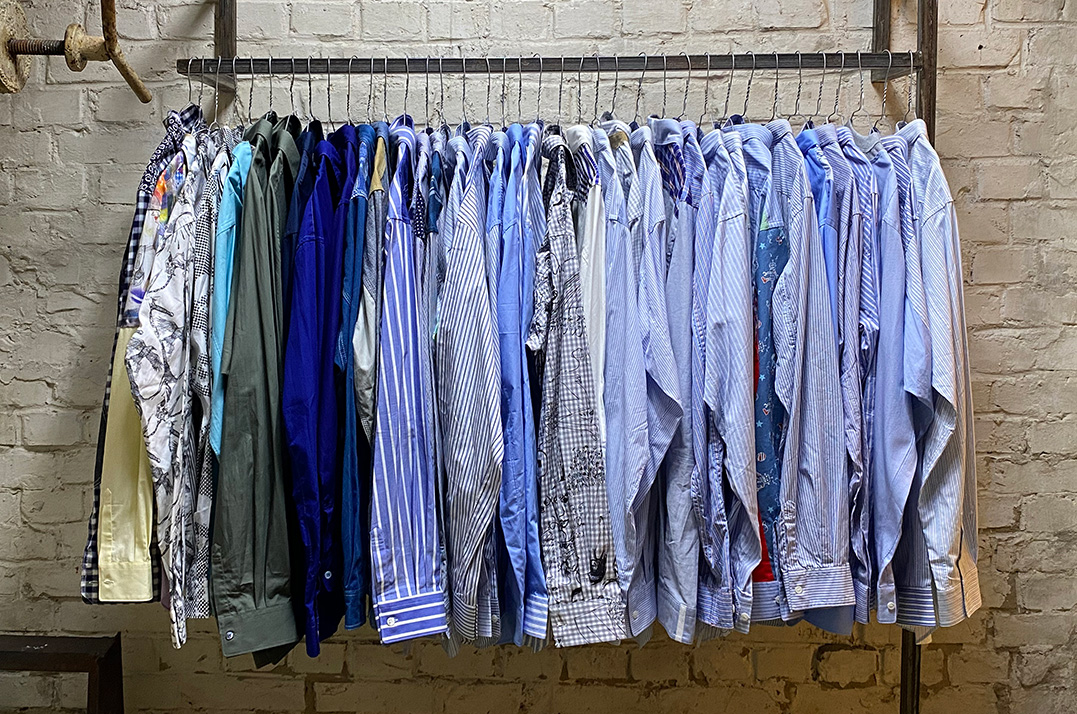
About niche and lack of attention

— Last year Ukrainian Vogue and Harper’s Bazaar wrote about Chakshyn as the first Ukrainian brand in the DSM. It seems that our media have forgotten about you.
— I knew the guys at Chakshyn were great and we were very kind. One day they called me and asked me to do a press launch for the collection at Atelier1. We agreed and the global stores thought we were already selling them. There is commercial break.
There is nothing to talk about if even in the book about Ukrainian fashion there is not a single word about Atelier1. We are principally do not bribe journalists.You can ask Comme des Garçons if they have ever paid for publishing information. I am for the free press and I will not ask people to write about us. That’s why the first book about Ukrainian fashion was published without a chapter about Atelier1. We were mentioned only in the encyclopedia that came out this year.
— What is the reason for this lack of attention in your opinion?
— We have a local hangout. You can go to your grandmother’s village for pies, or you can climb Mount Everest. Both are great and rewarding pastimes. Ukraine chooses pies. And we will be here when people stop being afraid to climb Mount Everest.
They wrote a lot about us first, there are still those magazines. What’s the point of continuing? They interviewed us and then said: «Oh, you know, the advertising department didn’t allow it». Western media are always asking for information, and ours… Atelier what? But we are philosophical about it.
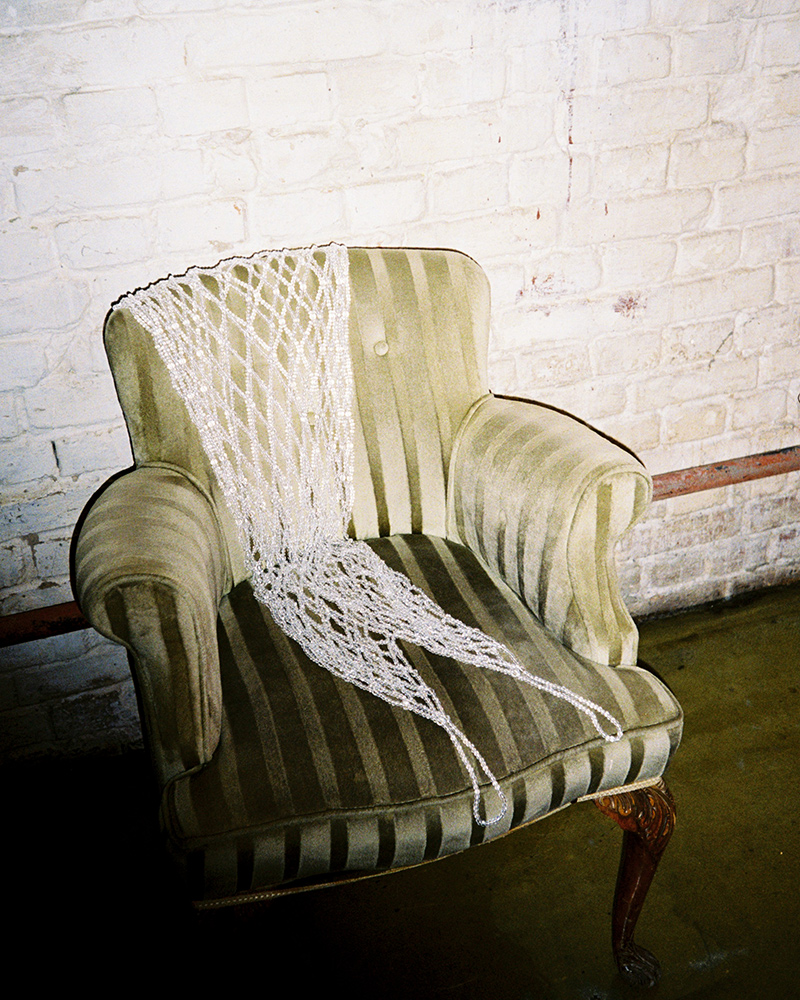
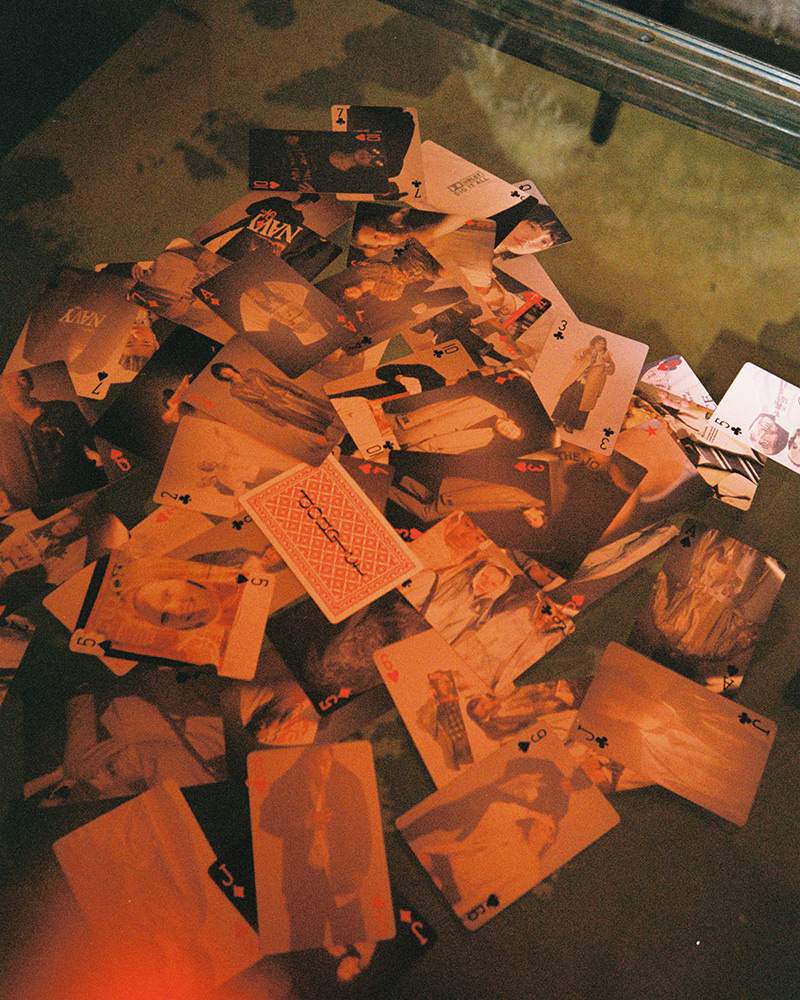
— Have you tried increasing your visibility on social media? Atelier1’s Instagram has a lot of photos from shows, but it’s not something young people are interested in.
— The Instagrams of other Comme des Garçons stores are even sadder than ours. But they have a different vision, they don’t need to draw extra attention. And we really want to move more into digital. We just need to find someone who is not just an SMM person, but who really knows it all.
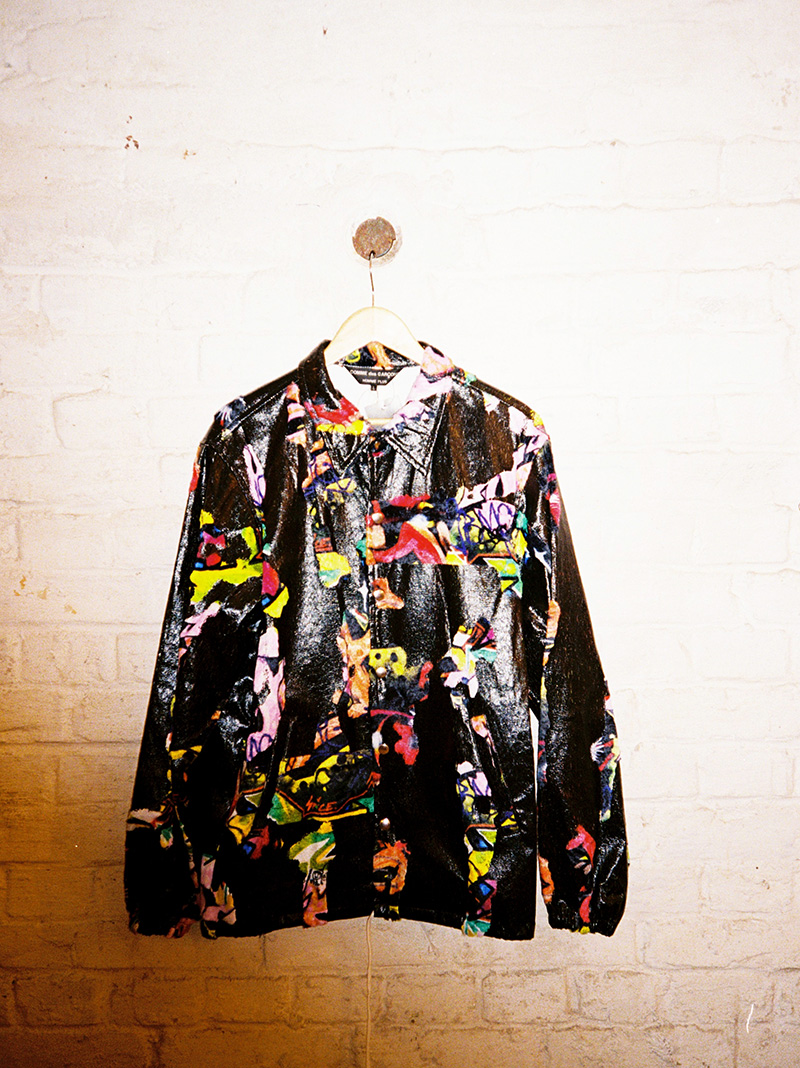
— Do you want to rejuvenate your audience?
— We want to expand it and show that we have a lot of collabs and interesting clothes. Do you know how many guys from China have come to us? They especially came for Gosha Rubchinskiy. And they tell me that young people are afraid to come into Atelier1 now. They think they’ll be judged when they come downstairs. We want to break that stereotype.
— By the way, were you afraid of criticism when you brought Gosha to Ukraine? He has a lot of clothes with Russian symbols on them.
— Adrian advised us to bring in his brand right away, but we refused at first. We were afraid that not everyone would understand. But we decided that we didn’t want to be held hostage to political games when relations between Ukraine and Russia were strained. I don’t support the Russian aggression. But Gosha is not the embodiment of it either, it’s not like he rode into Donbass on a tank. Therefore there is no need to confuse the concepts.Gosha’s arrival was a response to that hysteria and hatred.
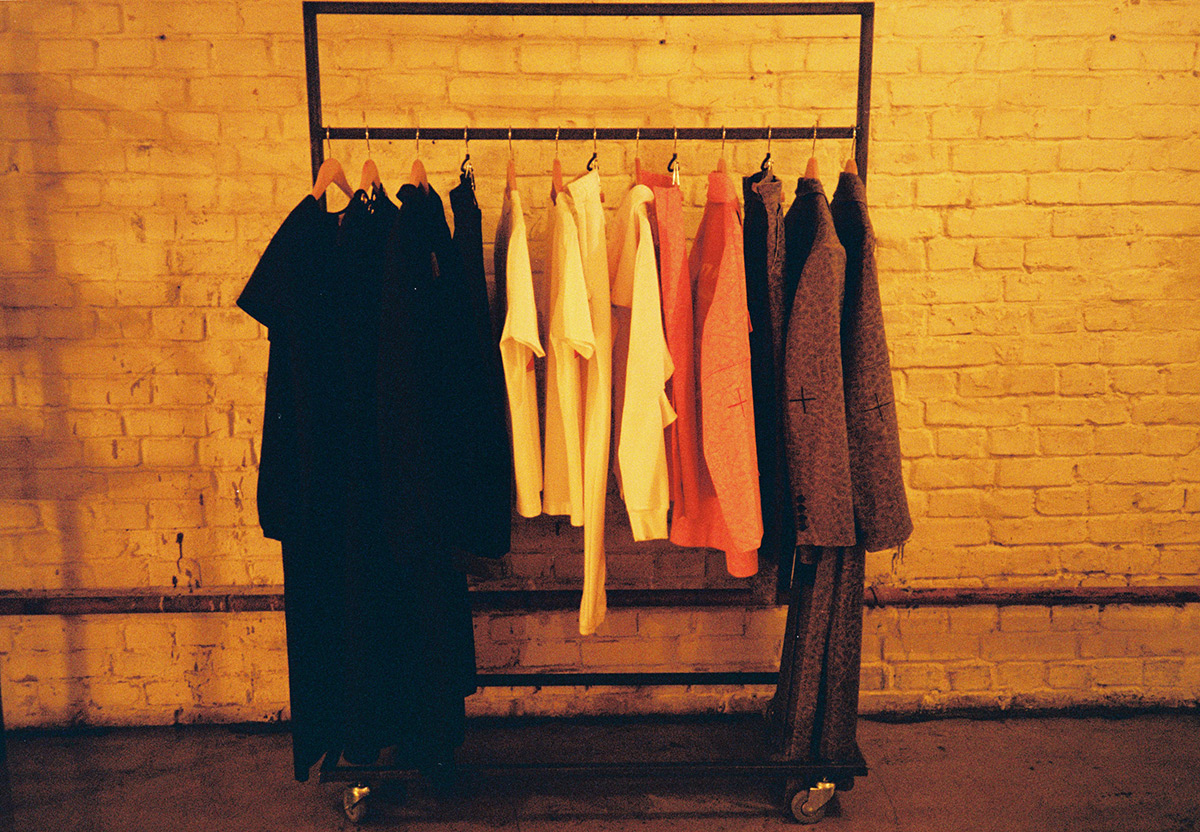
— Did Atelier1 succeed in becoming the place you aspired to be at first?
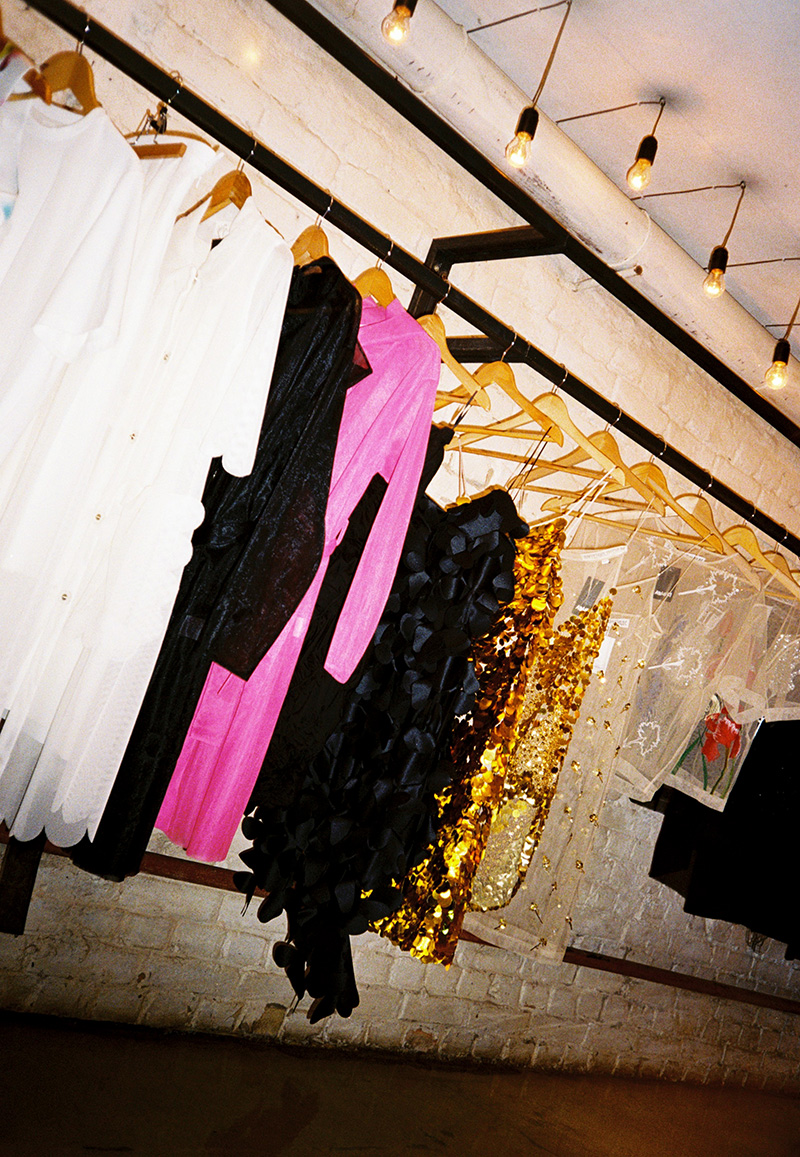
— Atelier1 was born as a starting point. I wanted to create a place for Ukrainian designers who studied abroad but didn’t manage to realize themselves there right away. And I wanted them to be able to sell their clothes here. Atelier1 is a desirable address also for already famous brands now.
Atelier1 has also become a platform for communication.We invite painters, artists and we have closed-door movies and parties. Once there was a biker party here — we completely cleared out the space for it and put a bike together in the middle of the store. We opened the first Atelier1 Barbers salon when barbershops were just starting to open in Kyiv.
We vacated the hall and launched a project in support of Pride, which was in Kyiv for the first time. We made huge prints and had an exhibition of artist Olga Solonko, who supports the LGBTQ community.
We opened Atelier1 because we wanted to change the consciousness of Ukrainians. We wanted to push the industry, to create competition, to teach designers to make commercial collections, without forgetting about creativity. And we wanted to make sizes not minus XS, but such sizes that all women could wear designer clothes. We think we have succeeded.
